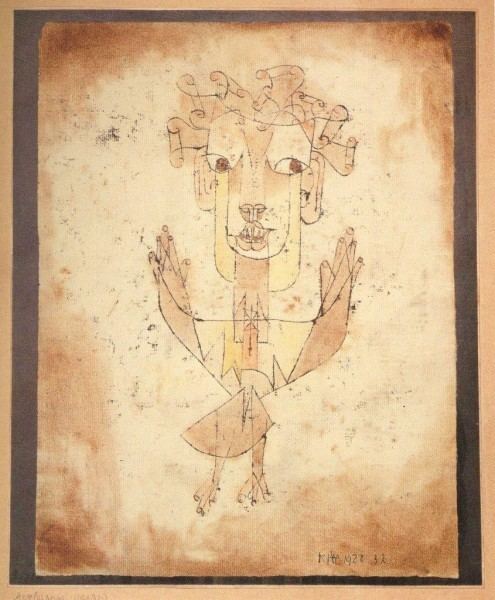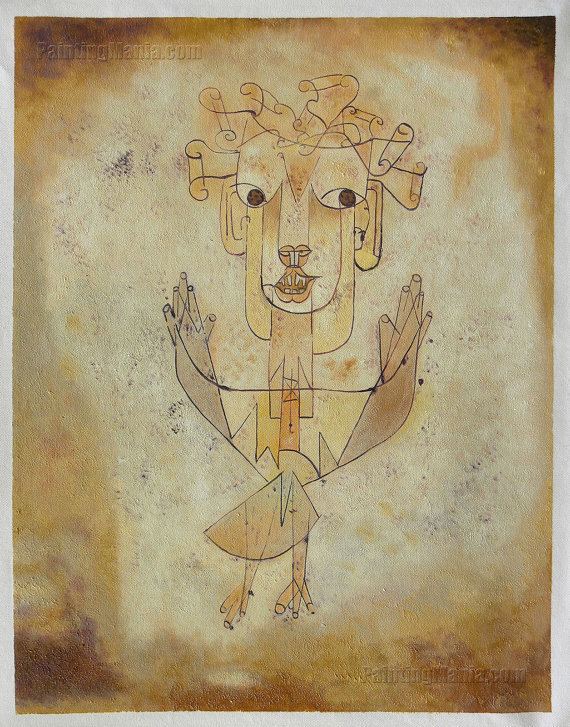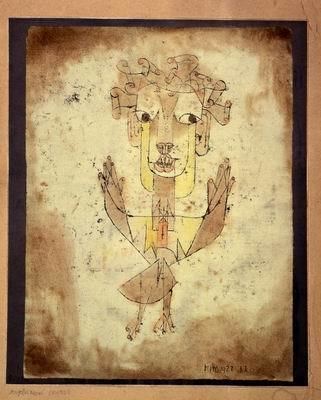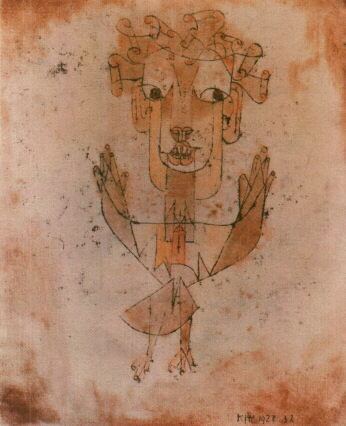Period Expressionism | Created 1920 Genre Christian art | |
 | ||
Paul Klee artwork Twittering Machine, Fish Magic, Cat and Bird, Insula Dulcamara, Death and Fire | ||
Angelus novus song
Angelus Novus (New Angel) is a 1920 monoprint by the Swiss-German artist Paul Klee, using the oil transfer method he invented. It is now in the collection of the Israel Museum in Jerusalem.
Contents

In the ninth thesis of his 1940 essay “Theses on the Philosophy of History,” the German critic and philosopher Walter Benjamin, who purchased the print in 1921, interprets it this way:

A Klee painting named Angelus Novus shows an angel looking as though he is about to move away from something he is fixedly contemplating. His eyes are staring, his mouth is open, his wings are spread. This is how one pictures the angel of history. His face is turned toward the past. Where we perceive a chain of events, he sees one single catastrophe which keeps piling wreckage upon wreckage and hurls it in front of his feet. The angel would like to stay, awaken the dead, and make whole what has been smashed. But a storm is blowing from Paradise; it has got caught in his wings with such violence that the angel can no longer close them. The storm irresistibly propels him into the future to which his back is turned, while the pile of debris before him grows skyward. This storm is what we call progress.

Otto Karl Werckmeister notes that Benjamin's reading of Klee's New Angel image has led to it becoming "an icon of the left."

The name and concept of the angel has inspired works by other artists, filmmakers, writers and musicians, including John Akomfrah, Ariella Azoulay, Carolyn Forché, and Rabih Alameddine.

In September 1940 Walter Benjamin committed suicide during an attempt to flee the Nazi regime. After World War II Walter Benjamin’s lifelong friend, Gershom Scholem (1897–1982), the distinguished scholar of Jewish mysticism, inherited the drawing. According to Scholem, Benjamin felt a mystical identification with the Angelus Novus and incorporated it in his theory of the “angel of history,” a melancholy view of historical process as an unceasing cycle of despair.

In 2015, in conjunction with her solo exhibition at the Tel Aviv Museum of Art, American artist R. H. Quaytman discovered that the monoprint had been adhered to an 1838 copper-plate engraving by Friedrich Muller after a Lucas Cranach portrait of Martin Luther.
